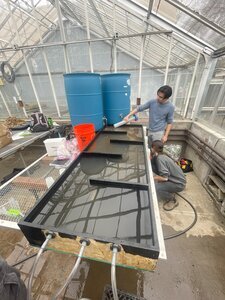
College of Engineering Unit:
The objective of this project was to explore methods of water pretreatment for runoff entering Managed Aquifer Recharge systems (MARs). MARs are a method for artificially injecting water collected at the ground surface back into aquifers to combat falling water tables around the world, due to widespread impermeable surfaces and land use alteration. One of the most common MARs is a dry well, which requires water pretreatment to avoid being clogged, especially by suspended particles like silts and clays in the water. The method chosen for this project was a sedimentation basin, for its practicality and economic feasibility. Sedimentation basins retain water for long periods allowing for particles settling out from suspension. The primary driver of MAR clogging is colloidal particles that could be settled by a sedimentation basin under the correct circumstances. Our team researched and analyzed existing sedimentation basin designs and chose a traditional design (according to the International Erosion Control Association) that accommodated our industry clients’ recommendations. Some priority concerns addressed in this traditional design were minimizing space, simplistic design, and minimal maintenance. We scaled this traditional design down by a factor of 10 to construct a prototype and conduct experiments. The experimental objectives were to verify a sedimentation basin’s ability to remove total suspended solids (TSS) from runoff water, and to investigate how basin configuration impacts the effectiveness of TSS removal. Plywood was used to build a 200 cm x 70 cm x 20 cm rectangular basin. Our first configuration was a traditional sedimentation basin design and the second incorporates baffles to create a more meandering flow for the runoff. Results from the experimental phase of the project indicate that both basin configurations were successful in reducing the amount of suspended solids from the water. Concrete recommendations cannot be made regarding the increased effectiveness of adding baffles due to experimental and sample processing uncertainty.
Industry Sponsor(s):
| Attachment | Size |
|---|---|
| 2.79 MB |